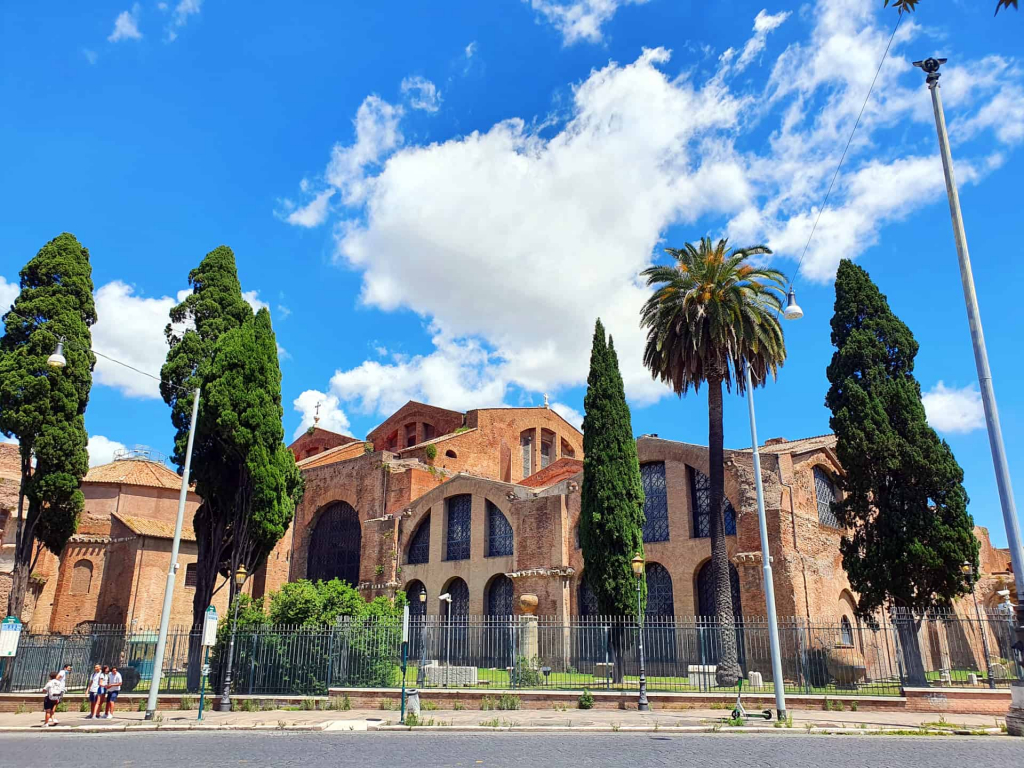
Saint Eustace
The legend of St. Eustace has been preserved in many versions, editions and translations: Greek, Latin, Armenian, Syrian, Georgian, Coptic, Slavic. All of these versions are different in detail, but consistent in what matters, and that is: the narrative of the miraculous conversion of St. Eustace, the adventures with his family, and the martyrdom.
Saint Eustace, Latin Eustachius, a Roman general, is one of the most famous early Christian martyrs and one of the fourteen holy helpers, the protector of foresters and hunters.
Before baptism, his name was Placid (lat. Placidus). He was a general under the Roman emperor Trajan, a just and merciful man.

Saint Eustace in Sant’Agnese in Agone (Rome)


The church Saint Eustace (Sant’Eustachio) with the relics of the Saint and his family (Rome)
On one occasion during a hunt, near Tivoli (Italy), he came across a deer that had a glowing cross between its horns. Then he heard a divine voice instructing him to go to the priest and be baptized. He was converted to Christianity, baptized with his wife and two sons, and was given the name Eustace.
After his baptism, Eustace went to the place where he received revelation through a deer, knelt down and thanked God for bringing him to the truth. The voice of the Lord appeared again and foretold him suffering for His name. Then Eustace secretly left Rome with his family, intending to retire among the people and to serve God in an unknown and humble environment.
When he came to Egypt, he was immediately tempted. An evil barbarian kidnapped his wife and sons. Soon the barbarian was killed, and his children were rescued by shepherds. Eustachius settled in the Egyptian village of Vadisis where he lived for 15 years.
After that, the barbarians attacked the Roman Empire and Emperor Trajan again needed Eustace as a military leader. Trajan sent his two soldiers to look for Eustace. By God’s providence, these officers, former friends, found Eustace and brought him to the emperor. Eustace gathered an army and defeated the barbarians.

On his way back to Rome, he found his wife and both sons. When he arrived in Rome, Emperor Trajan had already passed away, and Hadrian ruled in his place. This one called Eustace to offer sacrifices to pagan gods, and Eustace refused because he was a Christian. The emperor condemned him to torment along with his wife and sons, but as the beasts did not harm them, they roasted them in a brass bull. On the third day, they removed their dead bodies, but unharmed.
The cult of this saint has been known in Rome since the VIII century. He is equally celebrated by the Eastern and Western Church. Three churches claim to have his relics, one in Rome, St Eustace and two in Paris.
The oldest of his monuments is the diocese or basilica of St. Eustace mentioned at the beginning of the VIII century by the documents of Pope Gregory II. It is also mentioned in the Liber pontificalis in the biographies of Pope Leo III and Gregory IV- Eustace and members of his family. The 8th district of the city of Rome is named after him.
Eustace is also one of the patron saints of Madrid, and his emblems are either a crucifix, a deer or a furnace.
The popular alcoholic herbal liqueur Jägermeister has a logo, depicting a deer that has a cross in its horns in memory of St. Eustace and also St. Hubert, who had the same vision.

Drinking fountain with the symbol of Saint Eustace (Rome)

Treasures of Rome – Rome Guided Tours
Roberto Alois Lautenschlager Kung
[email protected]
Partita IVA: 17002181000
“ROMA AETERNA EST”
Rome is eternal – (Albius Tibullus)






